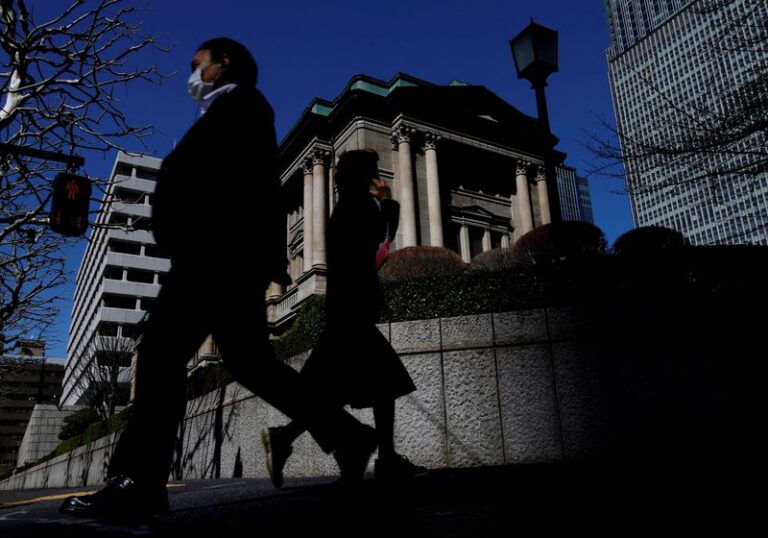By Leika Kihara and Takahiko Wada
TOKYO (Reuters) – The Bank of Japan must raise interest rates regularly to guard against the risk of inflation accelerating well above its 2 percent target, said Takeo Hoshi, an academic with knowledge of the country’s monetary policy.
The dynamics of wage inflation in Japan are changing in ways not seen in the past, with a growing labor shortage driving up labor costs and prompting more companies to raise prices, said Hoshi, professor of economics at the University of Tokyo.
After ending a package of unconventional easing measures in March, the BOJ will continue to raise rates to anchor inflation expectations around 2%, and eventually begin quantitative tightening, Hoshi told Reuters on Friday in an interview.
“Unless the BOJ raises rates, inflation could accelerate too much. The type of inflation seen in the United States and Europe could very well occur in Japan,” said Hoshi, who maintains close ties with current policy makers at the BoJ.
“There is a significant risk that inflation will exceed the BoJ’s target. This is something the central bank should now be concerned about,” he said.
Hoshi declined to say how soon the BoJ might raise its interest rate from current near-zero levels, but said hikes were likely to happen “regularly” given upside risks to inflation .
“In deciding when to change policy, the BoJ must also take into account how its US and European counterparts are moving, as this could affect asset prices, including exchange rates,” he said.
Hoshi attended the BOJ’s May 21 workshop, which was part of a review of the pros and cons of its past unconventional monetary policy. He chaired a session analyzing the evolution of the economy and prices in Japan.
The BoJ in March ended eight years of negative rates and a policy capping long-term borrowing costs around zero, marking a historic shift from its sweeping stimulus measures.
BOJ Governor Kazuo Ueda said the central bank intends to raise rates to levels considered neutral for the economy, provided growth and inflation develop as expected.
Many market participants expect the BoJ to raise rates this year, with some betting on action as soon as July.
Expectations of higher short-term rates pushed the yield on 10-year Japanese government bonds to 1.10% on Thursday, the highest since July 2011. The benchmark yield settled at 1.065% on Friday .
Hoshi said the recent rise in 10-year yields was a “good sign” that showed the BOJ’s decision to end its control of bond yields allowed yields to be more determined by market forces.
But the BOJ must be careful in communicating a strategy to slow bond purchases, and possibly sell them, because the huge size of its holdings could amplify the impact on the market, he said .
“One idea could be for the BOJ to communicate how it would shed its huge bond holdings in, say, 20 years. In doing so, it must remind markets that the plan is not set in stone and could change depending on the circumstances,” Hoshi said.
Japan’s core inflation rose to 2.2% in April, remaining above the central bank’s target for more than two years, as businesses continue to pass on higher commodity costs to households .
The BoJ has stressed the need to keep interest rates low until inflation is further driven by sustained wage increases and robust domestic demand. Ueda also said inflation expectations are now around 1.5%, below the BoJ’s 2% target.
(Reporting by Leika Kihara; editing by Sam Holmes)


